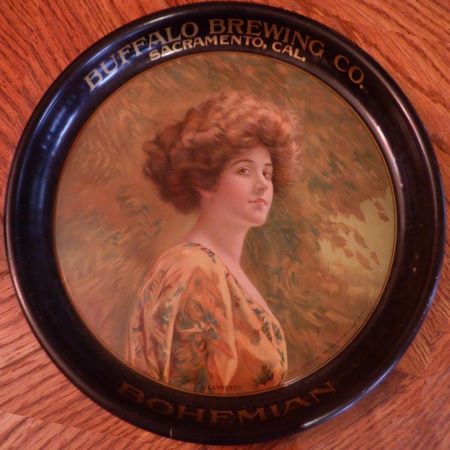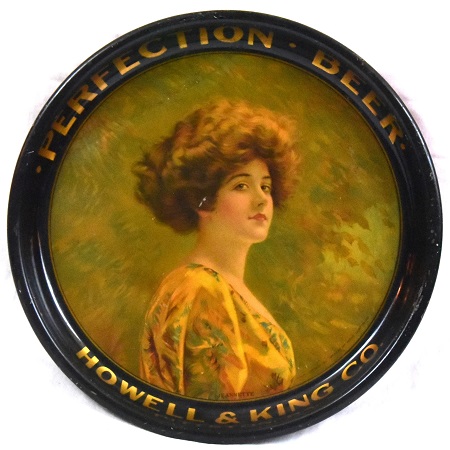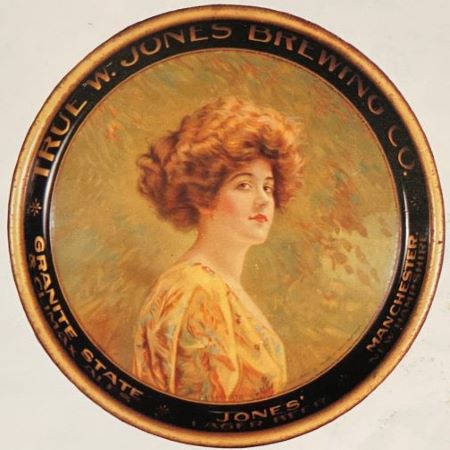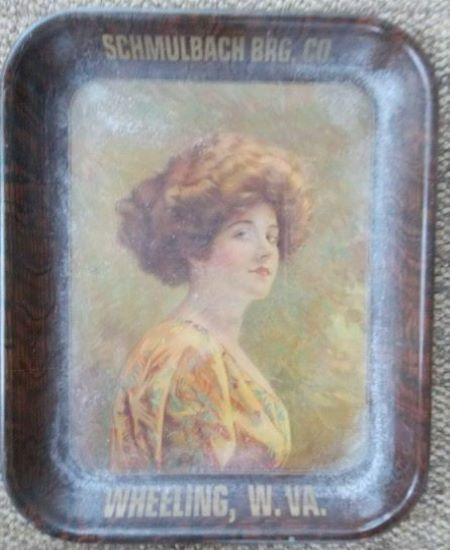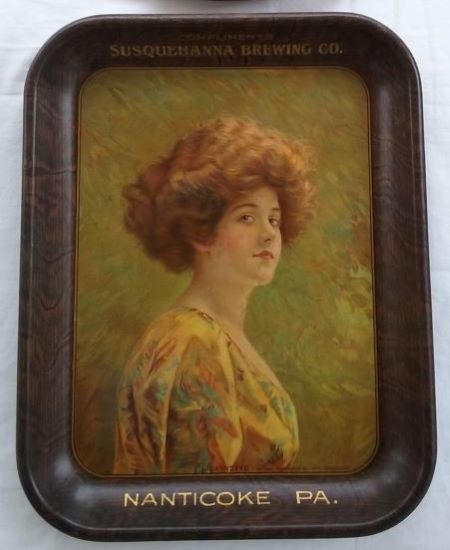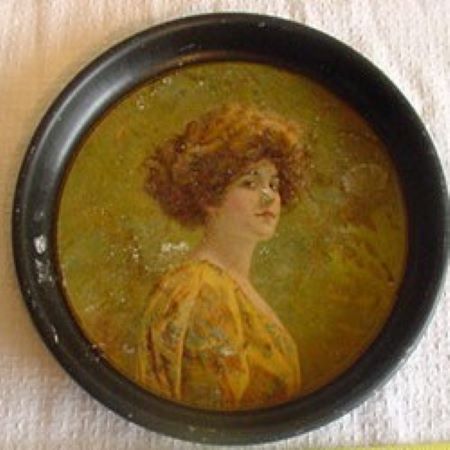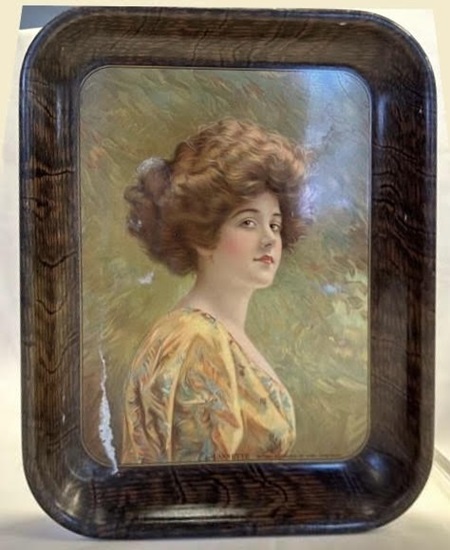The 'Stock' Exchange
American Art Works No. 121 "Jeanette"
American Art Works No. 121 "Jeanette"
Date: 1911
Size: 13" Round
10.5" x 13.5"
Type: Pie
Scarcity: Fairly Common
Value: $$$ to $$$
Condition & Brewer Dependent
Size: 13" Round
10.5" x 13.5"
Type: Pie
Scarcity: Fairly Common
Value: $$$ to $$$
Condition & Brewer Dependent


Making this possible were the increasing availability of hair dryers and curling irons. Although both had been invented in the late 19th century, they were only becoming widely available to the middle class in the first years of the 20th century. It was also around this time that the first tools for creating permanents were invented. Permanents at this time took up to 12 hours to complete. A heated iron with a shaped plate was also used to create a wave look. The French hairdresser M. Marcel Grateau invented this hair ironing device in 1872. A lot of body and bulk was a goal for 1910 women who curled their hair.
One other explanation cited in our research for these more voluminous hairstyles is the increase in immigration from countries where thicker, more voluminous hair was more common. From 1880 to 1924, more than 2 million Eastern Europeans, mainly Catholics, immigrated to the U.S. Of those, immigrants of Polish ancestry were the largest group. During the same period, roughly two million Jews came to the U.S., seeking opportunity and fleeing the political massacre taking place in Eastern Europe. Italian immigration to the U.S. reached its peak of over 2 million between 1910 and 1920.
There is neither a literary nor artistic reference we could find as candidate for inspiring this particular design, although there is a superficial similarity to Gustav Klimt’s “Lady in Gold” that was completed in 1907. Nor could we find a likely historical figure of the era upon which this design might be based.
In August of 1911, Sahling apparently left American Art Works for cross-town rival H. D. Beach; however, he returned at the beginning of November 1911 and the first entry in his workbook from December 1911 is “Stock tray No. 121” although he doesn’t give a name to the design.
Size & Shape and Advertising Placement
This design comes in 13” concave pie and small oblong (11x14) shapes; the pies have a black rim, sometimes with gold edges, while the small oblongs usually have woodgrain rims. Both use gold advertising text on the rim. We have seen a square stock sample version but never one with advertising. We have never seen any sign or tip tray versions of this design.
Hager & Price
Hager does not discuss this design but does include it in the introduction date table for 1911 and in his catalog. Non-brewery versions typically only realize double figures while brewery versions are typical in the triple figures, although we’ve only seen a few reach mid-triple figures. One notable exception many years ago was True Jones Brewing example in excellent condition that realized almost $1150. One interesting pattern we detected in reviewing pricing data—as a general rule, the pie versions realized stronger prices than the small oblong versions.
One other explanation cited in our research for these more voluminous hairstyles is the increase in immigration from countries where thicker, more voluminous hair was more common. From 1880 to 1924, more than 2 million Eastern Europeans, mainly Catholics, immigrated to the U.S. Of those, immigrants of Polish ancestry were the largest group. During the same period, roughly two million Jews came to the U.S., seeking opportunity and fleeing the political massacre taking place in Eastern Europe. Italian immigration to the U.S. reached its peak of over 2 million between 1910 and 1920.
There is neither a literary nor artistic reference we could find as candidate for inspiring this particular design, although there is a superficial similarity to Gustav Klimt’s “Lady in Gold” that was completed in 1907. Nor could we find a likely historical figure of the era upon which this design might be based.
In August of 1911, Sahling apparently left American Art Works for cross-town rival H. D. Beach; however, he returned at the beginning of November 1911 and the first entry in his workbook from December 1911 is “Stock tray No. 121” although he doesn’t give a name to the design.
Size & Shape and Advertising Placement
This design comes in 13” concave pie and small oblong (11x14) shapes; the pies have a black rim, sometimes with gold edges, while the small oblongs usually have woodgrain rims. Both use gold advertising text on the rim. We have seen a square stock sample version but never one with advertising. We have never seen any sign or tip tray versions of this design.
Hager & Price
Hager does not discuss this design but does include it in the introduction date table for 1911 and in his catalog. Non-brewery versions typically only realize double figures while brewery versions are typical in the triple figures, although we’ve only seen a few reach mid-triple figures. One notable exception many years ago was True Jones Brewing example in excellent condition that realized almost $1150. One interesting pattern we detected in reviewing pricing data—as a general rule, the pie versions realized stronger prices than the small oblong versions.
Confirmed Brewer used Stock Trays
Non-Beer Related & Non-Tray Uses
Another distinctive thing about “Jeanette” is her hair, both the amount and the way it is styled. Although women’s hair featured prominently in numerous previous designs, the styling was much more natural. Here it is a main focus. There are several other non-stock trays, presumably from the same time period that also feature similar hairstyles. Hairstyles became more elaborate in Edwardian England (first decade of the 20th century), including the pompadour, which was worn by women and men in 1910. Unlike the rockabilly version from the 1950s, the pompadour of the 19-teens was achieved by bringing the sides of the hair back and curling it under or feathering it, so it fans out at the top and back of the head. Hairpieces were often used to add extra body to the feathered hair or to serve as a framing device round the face.
General
No. 121 continues the reliable Victorian/pretty lady theme of designs, but she’s a little more modern than most of her predecessors both in her clothing and the somewhat impressionist background. The striking thing about her portrait is the lack of adornment; most other Victorian/pretty lady designs up this point featured flowers, or tiaras or jewelry. There are not much in the way of clues to give this design context; “Jeanette” is giving an interesting side-eye to the viewer leaving interpretation up the viewer, which would seem to be ideal for a variety of advertisers. Still most users were brewers or distilleries.
No. 121 continues the reliable Victorian/pretty lady theme of designs, but she’s a little more modern than most of her predecessors both in her clothing and the somewhat impressionist background. The striking thing about her portrait is the lack of adornment; most other Victorian/pretty lady designs up this point featured flowers, or tiaras or jewelry. There are not much in the way of clues to give this design context; “Jeanette” is giving an interesting side-eye to the viewer leaving interpretation up the viewer, which would seem to be ideal for a variety of advertisers. Still most users were brewers or distilleries.
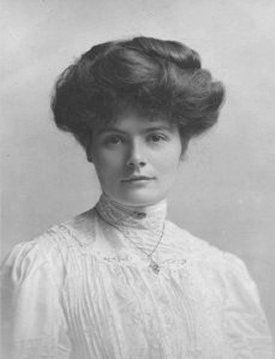
Click the Picture to Return to Meek & Beach Stock Catalog Page
